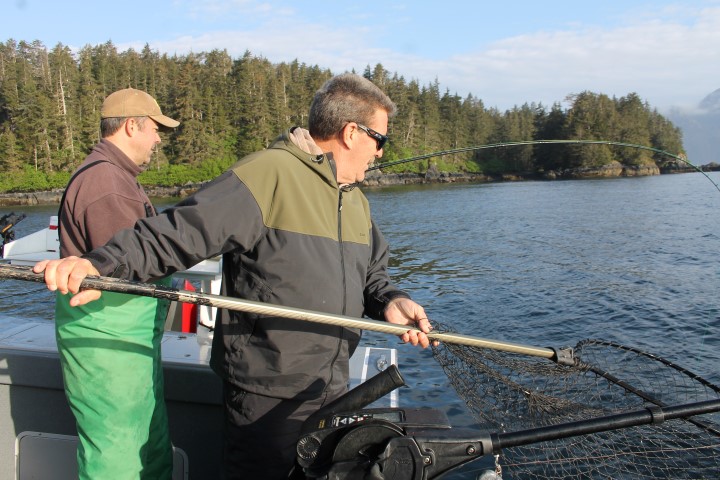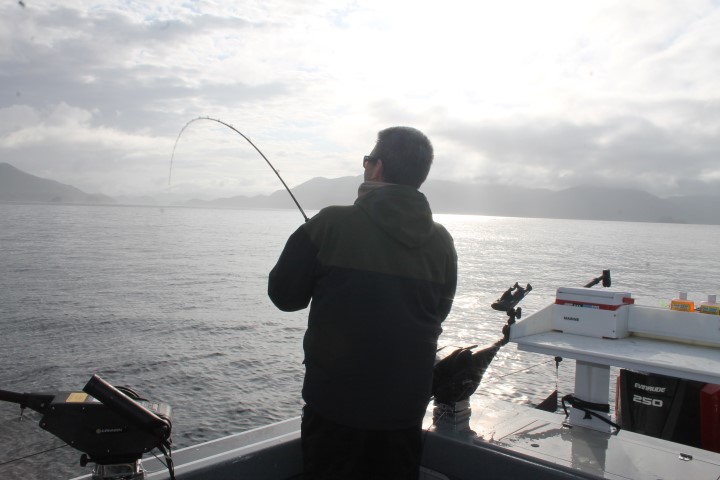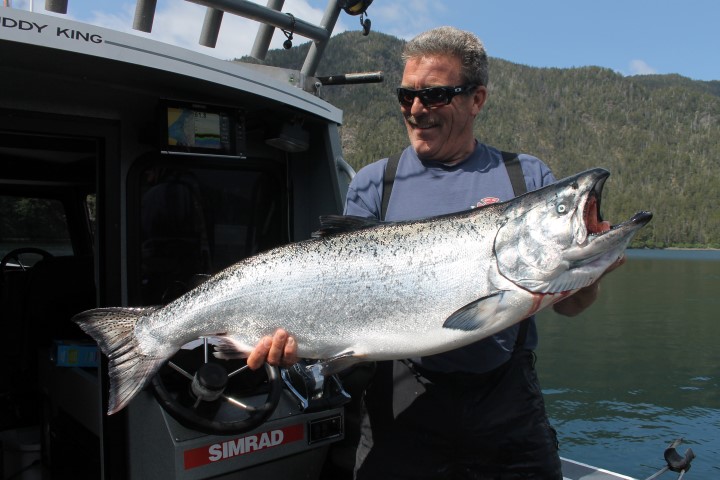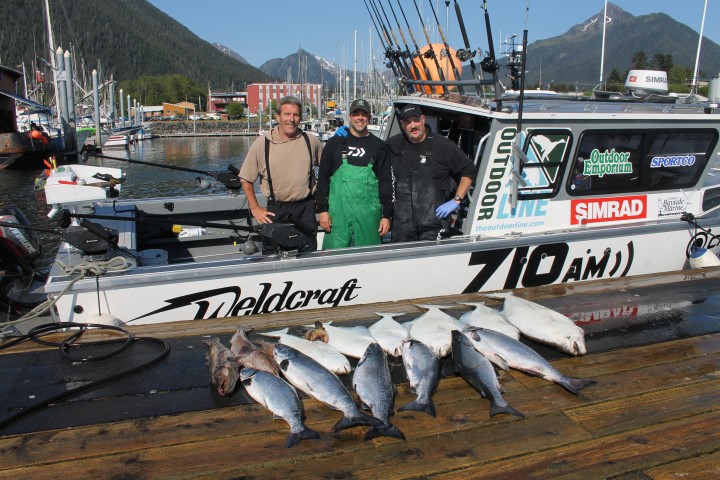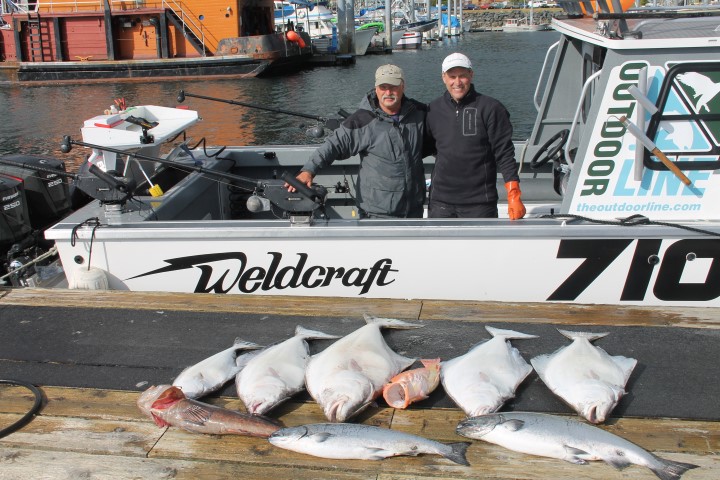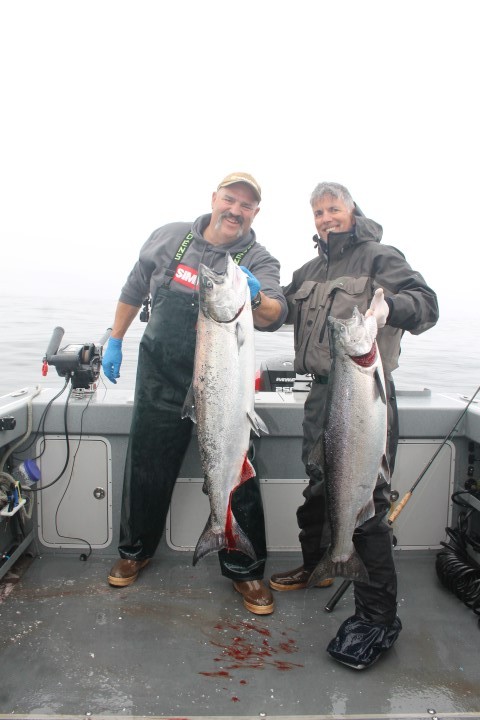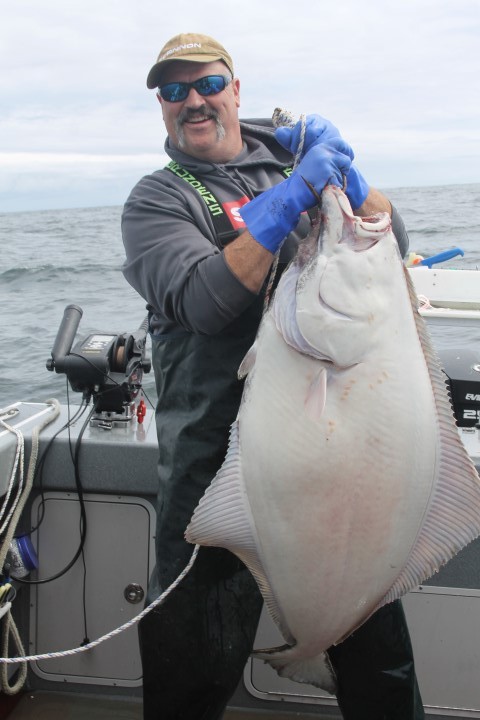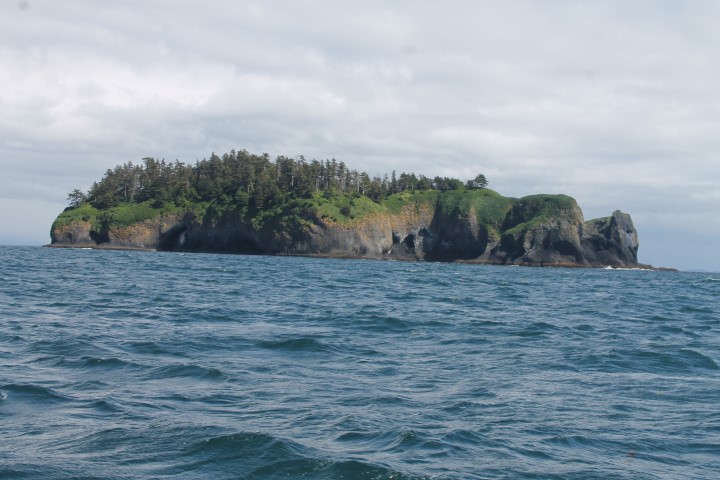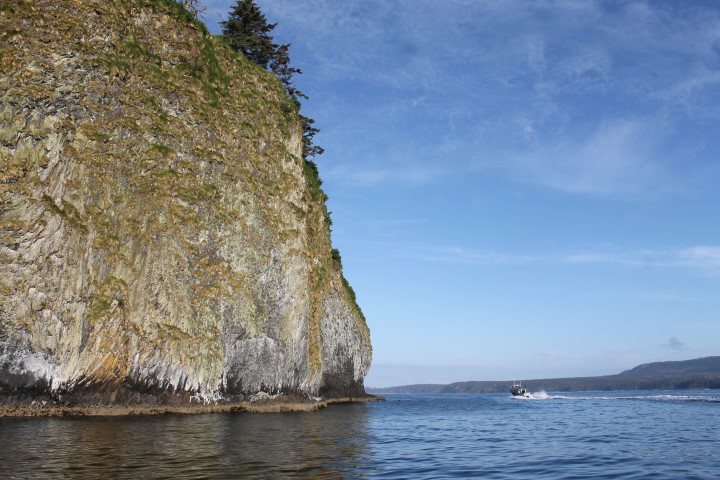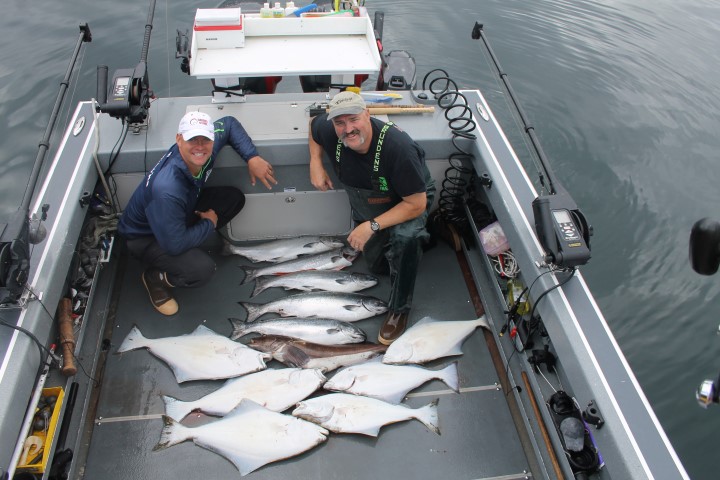Sitka 2015: Adjustments Leave a reply
Every year of our annual sojourn to southeast Alaska, I seek a pattern, a clue or a theme to the location and distribution of fish that may lead to an understanding or “edge”, eventually guiding us to a successful season. We’ve all read -with varying degrees of interest and concern- of the changes in sea surface temperatures in the northeastern Pacific Ocean and little did I know when I boarded the plane to Sitka that the ocean temperatures would play a pivotal role in our approach to this world-class fishery.
Most seasons the predominant chinook forage base in the Sitka area is sand lance, commonly known an “needlefish”. Sand lance are a preferred salmonid food item as they are usually abundant, readily preyed upon by chinook, very rich in oil, easily digested due to their delicate structure and can be packed away by an adult chinook like a belly full of spaghetti!!!
Chinook are so fond of sandlance that a large abundance will virtually stop a migration, making these chinook vulnerable to vertical techniques such as mooching and jigging. The problem this season was that the nutrient-poor warm water had in all probability, reduced local zooplankton (euphausiids and copepod) levels, causing the sand lance population to take a downturn. Sand lance do not roam far from their home sand, so are very dependent upon local conditions and poor food availability can quickly lead to a sand lance population crash.
Herring on the other hand are more mobile and opportunistic feeders and therefore have a better ability to adapt to a changing or re-located food base. The preceding paragraph was the longest possible way of stating that herring was the one and only food item found in the chinook we encountered and since the chinook were not all “ganged up” on a sandlance patch, mooching chinook was not the most effective technique.
What was the most effective technique for us?
Why trolling with downriggers of course!
Greg Copeland of KING 5 and my old buddy Phil Michelsen do the downrigger “Dance” with a fiesty, early morning chinook and Sitka 2015 is well underway!
Phil Michelsen does battle with a big chinook on a misty morning and little would we know….
…that this would be the biggest chinook not only of this trip but of the last several years! A beautiful specimen of over 41 pounds! Phil’s grin just says it all!
Phil and Greg’s last day was a productive, calm and memorable outing and there was alot of work to do after the “photo shoot”!
Lauren Bivins of Harbor Marine in Everett and my summer “Robbo replacement” co-host John Martinis jumped in for some very solid Sitka success!
Lifelong friend Larry Stauffer and I doubled up on a couple chunky chinook that both fell to trolled whole herring. Overall, the average size of the chinook we encountered was larger which was a reverse of a trend of smaller fish over the past several years.
My biggest halibut of the season was this 70 pounder that we hooked in over 400 feet of water. My Diawa Tanacom 750 electric reel made short work of this flattie!
One of Sitka’s signature landmarks, St. Lazarius Island also know as “Bird” Island looks different with every hour of the day. In this afternoon sun it looks spooky…
…and in the morning sun as the charter fleet runs by it’s merely a milestone along the way. One of the most wonderful things about fish are the places we must go to find them.
Brock Huard is in the third season of his Sitka experience and he seems to enjoy it more each and every year. I feel very fortunate to be able to share some of his precious free time in this wonderful place.
Sitka remains the angling experience of my life and there is something each and every season that stays with me throughout the year. This year it was the ability to make adjustments that stood out. As anglers, we are very good at going to the same places at the same times to use the same gear to catch our fish. However, change one leg of that triangle and we seem to struggle. The ability to observe changing conditions and make adjustments to our game plan is one of the most valuable traits that an angler can possess.
Tom Nelson
The Outdoor Line
710 ESPN Seattle
www.theoutdoorline.com


